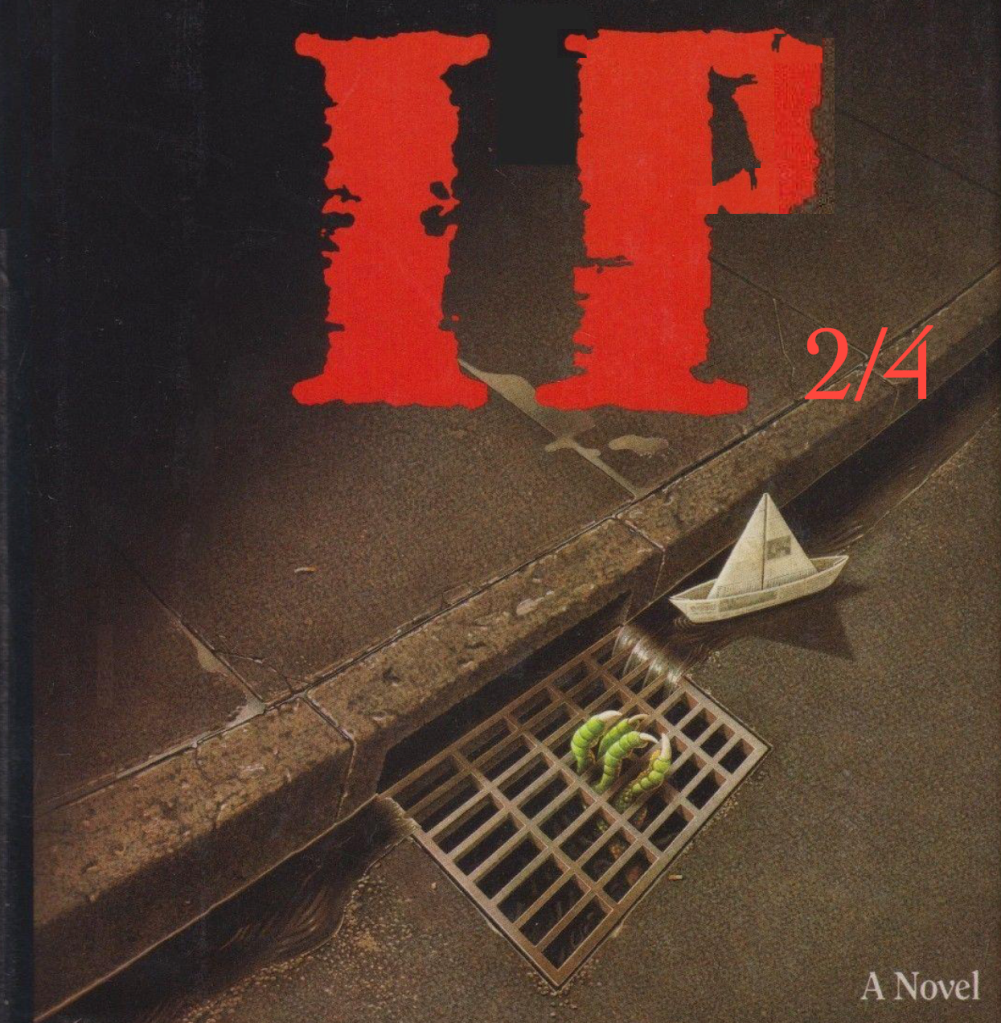
A quick post based on a Twitter thread I did this afternoon.
Several people asked me to say something about a rather fantastical finding, that SARS-CoV-2 might already have been lurking in Barcelona sewers in March 2019, a year before the first COVID-19 case was reported in Spain.
It was reported by a group from University of Barcelona and posted as a non-peer reviewed preprint on MedRxiv on June 13.
With fantastic claims should come fantastic data. That is not the case here.
Let’s dive into the Barcelona sewers to find out the details.
University press release and Reuters article
Almost two weeks after the authors posted the preprint online, on June 26 (yesterday), the University of Barcelona published a press release and an article with the headline “SARS-CoV-2 detected in waste waters in Barcelona on March 12, 2019“. The text focused only on one part of the study: the one positive sample from last year.
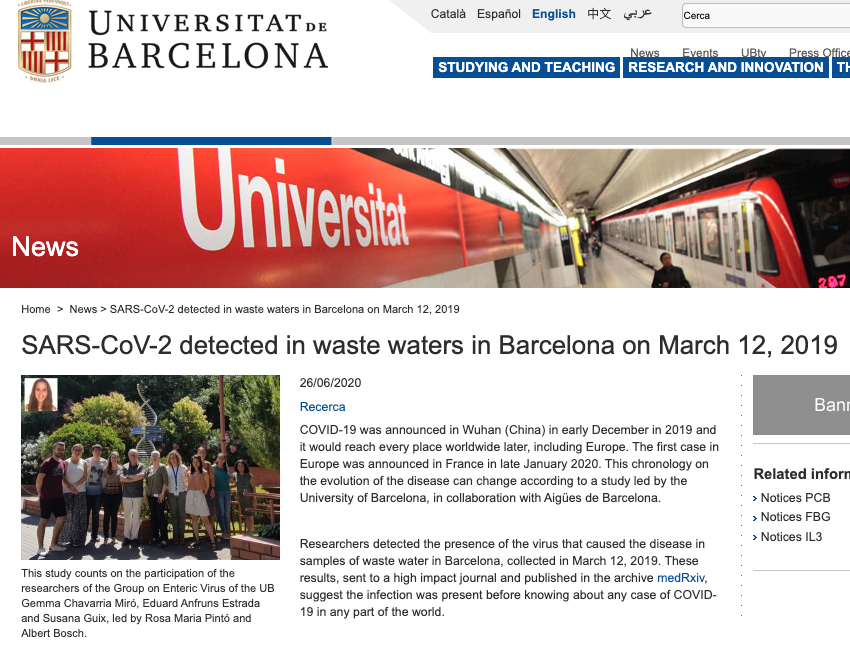
That rather sensational headline was picked up by the international news organization Reuters, which did not simply copy the text, but wrote their own article about it yesterday. Two journalists reported on the story and interviewed some people, including the authors. Their headline was equally sensational: “Coronavirus traces found in March 2019 sewage sample, Spanish study shows“.
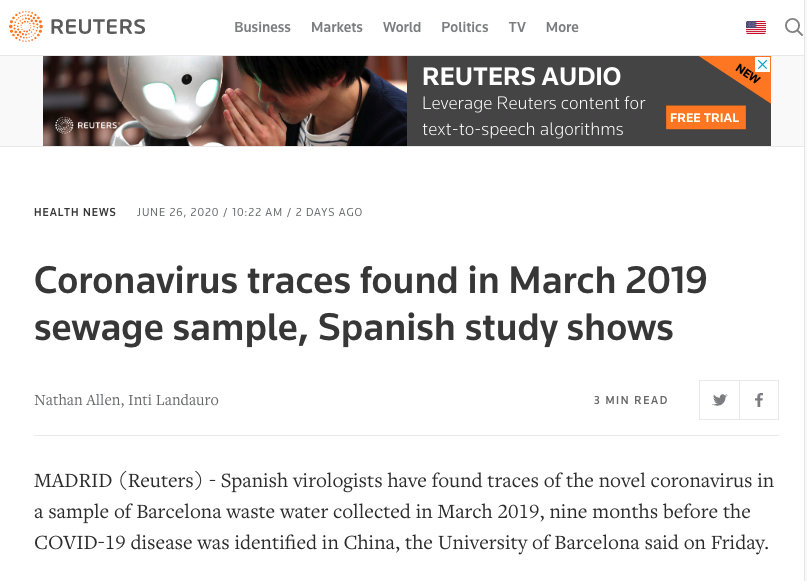
Reuters also tweeted the following post:
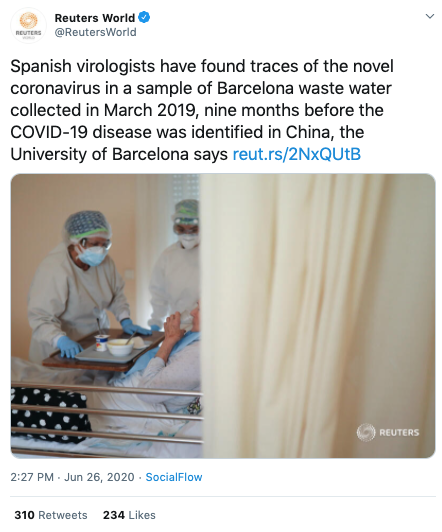
The Reuters journalists could have been a bit more critical. Instead, they believed the findings were sound and fell into the trap of thinking that a preprint is the same as a peer-reviewed scientific paper. The Reuters article does mention that the results might be a bit preliminary. A scientist not involved with the study is quoted saying that it was “early to draw definitive conclusions“. But the authors are quoted at the end, appearing convinced that the finding was true.
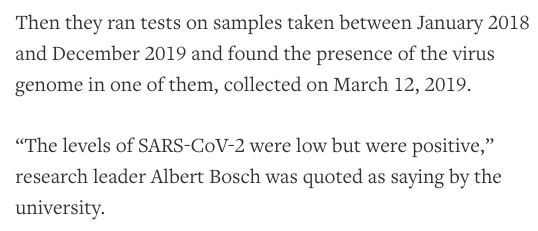
The preprint on MedRxiv
Let’s take a look at the original study from the Barcelona group to see how the authors found this unexpected occurrence of the virus – about a year before the first COVID-19 patients were diagnosed in the Spanish city.
This study, “Sentinel surveillance of SARS-CoV-2 in wastewater anticipates the occurrence of COVID-19 cases” by Chavarria-Miro et al. has not been peer reviewed. It is a preprint on MedRxiv and therefore it needs to be interpreted with extreme caution.
The English version of the University of Barcelona press release states that the manuscript was “sent to a high impact journal” for peer review.
IP2/4 PCR assay for virus detection in wastewater
The study’s initial intent was to see if the virus could be detected in Barcelona wastewater during the start of the COVID-19 outbreak in early 2020, and it was indeed found in those samples starting in Jan 2020. That is cool, because wastewater screening is a nice surveillance method to sample a whole city.
The authors tested the presence of the SARS-CoV-2 virus using different Real-Time PCRs (rtPCRs) on five different viral regions, i.e. IP2, IP4, E, N1, and N2. The IP2 and 4 PCRs both detect parts of the viral RNA-dependent RNA polymerase (RdRp) gene. They followed the WHO / Institute Pasteur RT-PCR protocol to detect the SARS-CoV-2 virus.
As expected, most wastewater samples were positive between January and May 2020, in most of the PCR assays. The first COVID-19 case in Barcelona was reported on February 25, so it seems the virus might have already been circulating a couple of weeks before that.
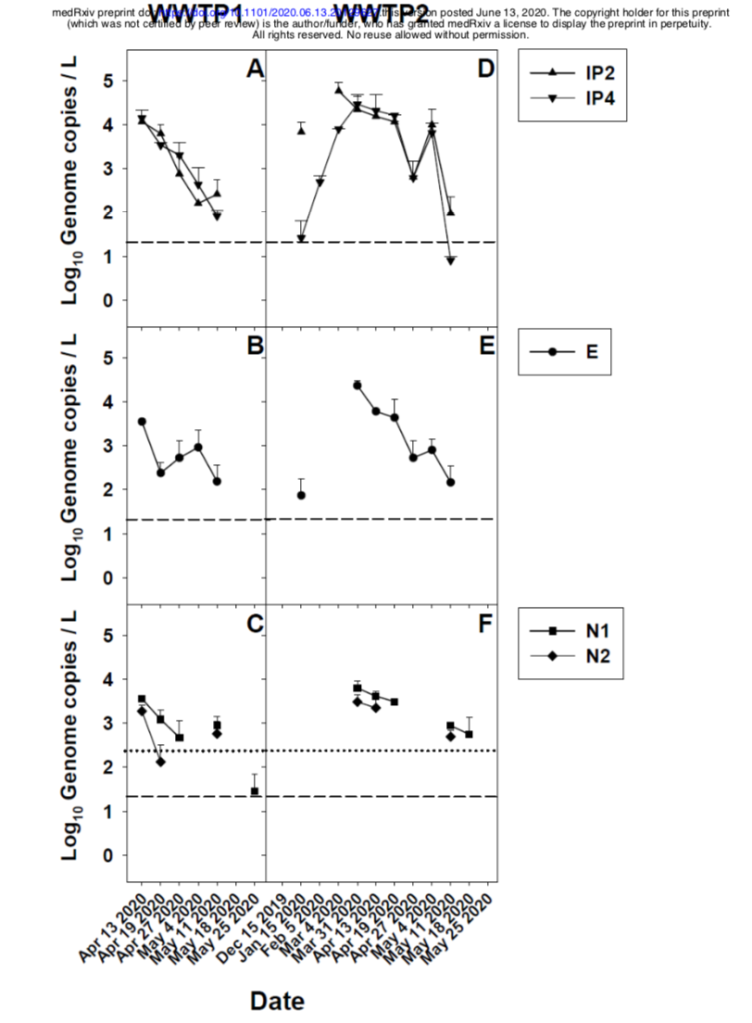
An unexpected positive sample from 2019
But then, the authors looked at some older wastewater samples. One of these, from March 2019 (a year before the first COVID-19 cases in the city) appeared to be positive as well.
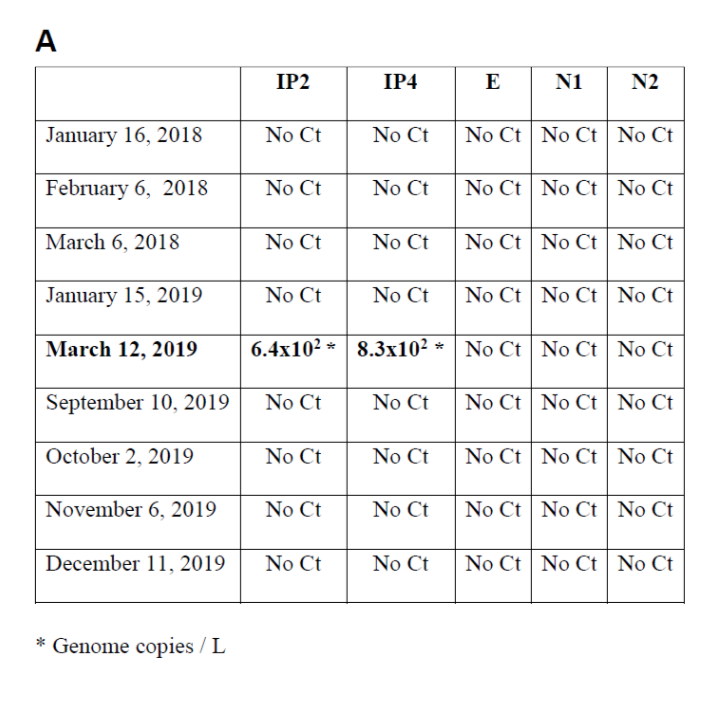
It was just one sample, though, and it does not appear that the authors repeated the test at all. No replicates as far as I can tell. But also note that only 2 of the 5 RT-PCR tests were positive, i.e. on the IP2 and IP4 targets.
Now, I am not a viral gene specialist, but several SARS-CoV-2 PCR assays have been described to give false positives. Even the WHO protocol to detect the virus, which was the protocol followed by the Barcelona group, states that a positive IP2/IP4 PCR, although specific in a small panel of other viruses, should be confirmed by the “E gene assay”. That test was negative in the Barcelona sample.
But the authors did not do any other target PCRs to confirm the positive sample. They also did not do any genomic sequencing. They did not do any confirmation to rule out cross-reactivity with some other virus. They also did not report on negative controls to rule out contamination of the 2019 sample with one of the positive 2020 samples. There is nothing in the paper about negative controls or strict separation of pre- and post-PCR rooms, so it is not clear how stringent they were in preventing cross-sample contamination.
These are all critical questions that peer reviewers might ask. And it is important to realize that this preprint has not been peer-reviewed yet.
This is why peer review is so important. Yes, peer review has many flaws, but it is better than nothing. Without peer review, researchers might draw preliminary or incorrect conclusions. We all love our own data. But other researchers’ critical reading is needed to find flaws.
A paper that makes a fantastic claim has to have fantastic data. This is not the case here.

Great critic review of the article. No fantastic data, no fantastic claim.
LikeLike
As a retired academic, though not in pure science, I feel that the Dean of Science at Barcelona (or its equivalent in Spain) should be relieved of his administrative duties. (Deans are selected usually from existing professors, so they can go back to teaching and research). It’s usually the Deans and other upper administrative figures who decide which research will be promoted in their university bulletins and to the press. I also know that most administrators want to advertise the achievements of their respective universities in order to climb up the ‘rug-ranking’ ladder. But lives are at stake here, and promoting non-peer reviewed research in the midst of a pandemic shows a serious lack of judgement. It should not be left to journalists peer review, although some have done a very good job of that. Since university administrators are chosen from the ranks of research, they know very well the difference between fantastic claims and not-so-fantastic data.
LikeLike